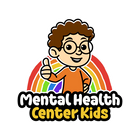|
Key Takeaways:
- Art therapy is a creative and engaging process for self-expression, relationship improvement, and cognitive development.
- Engaging in art therapy can reduce stress and provide individuals with an outlet for troubling or intense thoughts.
- Some art therapy activities include painting, turning nature into art, crafting memory boxes, and sculpting with clay.
|
Art therapy activities for kids provide a creative outlet to support their personal and emotional development, especially when they struggle to express themselves verbally. With the right medium, you can help your child become more self-aware, socially skilled, and confident in their abilities. Discover 15 art therapy ideas for kids of all ages.
What is Art Therapy?
Art therapy integrates crafts, creativity, and art-making to help individuals express themselves, strengthen their relationships with others, and improve their mental health. It combines creative processes and psychological theory.
Mental health professionals use art therapy to support a group or individual’s personal and relational treatment goals. The discipline began in the 1940s, with British artist Adrian Hill coining the term in 1942.
This integrative method engages the mind, body, and spirit through painting, drawing, modeling, and other creative expressions. Art therapy sessions are conducted by mental health professionals, who incorporate these techniques in individual sessions, group therapy, and family counseling.
Benefits of Art Therapy for Kids
Research shows that art therapy can benefit children experiencing the following conditions [*]:
Art therapy can enrich children in the following ways:
-
Stimulated cognitive abilities: Studies show a connection between artistic outlets and brain function, as individuals enter a flow state when creating art [*]. When people enter this state, they become focused and allow their brains to heal and recover.
-
Reduced stress and anxiety: Art therapy is an outlet that allows people to relax and be in the present moment. Studies show that engaging in art at least 45 minutes daily can lower cortisol levels and significantly reduce stress [*].
-
Opportunities for emotional expression: Younger children may struggle to express themselves verbally, and art therapy provides an excellent opportunity to explore their emotions through creativity.
Art Therapy Activities for Kids
Fostering creativity in children can inspire them to see things from different perspectives. Try these 15 art therapy exercises for kids to stimulate their creative minds.
1. Vision Boards
Vision boards help children set meaningful goals and visualize their definitions of success. They foster a growth mindset and give children time to focus on personal aspirations.
Materials:
- Canvas or board
- Drawing materials (paint, crayons, markers, pens, etc.)
- Magazines or printouts
- Scissors
- Glue
- Other craft materials (popsicle sticks, yarn, glitter, etc.)
Process:
- Provide vision board examples and inspiration.
- Prompt your child with questions like “What color makes you feel optimistic?” “What dream jobs do you have in the future?”
- Gather vision board supplies and start crafting.
2. Art From Nature
Given that many children spend a lot of their time in front of screens, spending time outdoors is essential. Creating art from nature offers a meaningful opportunity for children to connect with their environment.
Materials:
- Fallen leaves, twigs, and flowers
- Scissors
- Glue
- Pencils
Process:
- Visit the park or walk in the neighborhood to collect materials like fallen leaves and twigs.
- Brainstorm the art your child wants to create. Provide options like flower printing, a nature mobile, or rock painting.
- Gather the appropriate art materials for your child’s chosen art project.
3. Friendship Bracelets
Friendship bracelets are an iconic part of most childhoods that have stood the test of time. Children can swap them with friends and classmates as a reminder of their bond. In addition, they improve hand-eye coordination and enhance a child’s fine motor skills.
Materials:
- Embroidery floss (thread, wool, or yarn)
- Scissors
- Beads
- Glue
- Tape
Process:
- Measure your child’s wrist and cut a string with two to three inches of allowance.
- Stretch the string and tie a knot on one end to keep the beads from falling.
- Work on a bracelet design. Your child can spell a specific word, like their friend’s name, or use various bead designs, such as animals or flowers.
4. Mask-Making
Mask-making allows children to individualize and express emotions that may be uncomfortable or difficult to trust. Making masks can also help kids make cultural connections and increase art literacy.
Materials:
- Card paper or cardboard
- Scissors
- Paint
- Colored paper
- Glue
- Other art materials (feathers, pompoms, beads, etc.)
- Rubber bands
Process:
- Cut out the eye holes and start drawing facial features.
- Decorate the mask using paint, markers, and other art materials.
- Create a snug headband by cutting out holes on either side of the mask. Attach rubber bands or an elastic to tie around the child’s head.
5. Personal Flags
Creating a personal flag provides opportunities for creativity, learning, and connection. Children can express themselves and their traits visually.
Materials:
- Construction paper or cloth
- Drawing materials (paint or markers)
- Barbecue sticks or popsicle sticks
- Tape or glue
- Scissors
Process:
- Cut a triangular or rectangular shape from paper or cloth. Attach this to a stick or pole.
- Ask your child to brainstorm symbols, colors, and drawings that represent them best. Start decorating the flag.
6. Mood Mandalas
Mandalas have been a creative tool for self-expression and healing for centuries. They can help children express and process their emotions in a non-threatening space.
Materials:
- Drawing paper
- Drawing materials (pencils, markers, crayons, etc.)
Process:
- Ask your child to pick three emotions they’ve recently experienced.
- Assign a color to each emotion.
- Encourage your child to draw a mandala or color a printed one to represent each emotion. As they color, discuss each emotion with your child.
7. Memory Box
Memory boxes allow families to preserve a child’s most precious childhood experiences. They’re an excellent medium for capturing fleeting moments and reminding children of their progress as they become adults.
Materials:
- A box or chest
- Memorabilia of your child
- Art materials to decorate the box (paint, markers, glitter, etc.)
Process:
- Find an appropriately sized box. You might use a vintage chest, a transparent box, or a cardboard box.
- Label and decorate the box with the materials you have.
- Start collecting memories like photographs, artwork, favorite articles of clothing, and mementos.
8. Family Portrait
How a child depicts their family visually can say a lot about how they connect. This activity allows them to reflect on their relationships and facilitate a deeper emotional connection with their family members.
Materials:
- Paper
- Paint
- Pencils or markers
Process:
- Gather a few photos of your family. Ensure every member is present in the image.
- Use the family photo as a reference to start creating a family portrait.
- Discuss with your child why they chose specific colors for each family member and display their portrait at home.
9. Clay Sculptures
Younger kids who may not have the hang of drawing can benefit from making clay sculptures, as it stimulates the brain, improves cognitive abilities, and helps them hone their motor skills.
Materials:
- Play-Doh or similar clay materials in different colors
Process:
- Choose a different theme for each sculpting session. For example, you can choose shapes, animals, or people.
- Use these themes to expand your child’s vocabulary. For instance, you can use this activity to teach your child basic shapes.
- Exercise their creative expression. Ask your child to use colors that make them happy or sculpt something that excites them.
10. Abstract Art
Children who haven’t mastered expressing themselves verbally may find solace in abstract art. This type of art encourages new concepts like colors and shapes while encouraging children to use their imagination.
Materials:
- Canvas
- Paint
- Paintbrushes
Process:
- Set up your child’s painting space. Provide them with the needed materials, like a canvas, paint brushes, and paint.
- Start by making random shapes. Encourage your child to use as many colors as they want.
11. Musical Painting
Music is an excellent medium for encouraging children to explore their emotional range. By pairing music with visual art, your child can access their imagination in ways they didn’t think possible.
Materials:
- Canvas or paper
- Paint and paintbrushes
- Crayons, markers, and other coloring materials
- Speakers or a medium for playing music
Process:
- Set up your child’s painting space. Choose different genres of music to play.
- Play the music and encourage your child to paint shapes using colors inspired by the current song. Ask them to think about how the music makes them feel.
- Repeat this process for various types of music.
12. Postcards
It can be challenging for children to express complicated feelings out loud, so why not write them down? Giving them a medium to write can put space between them and their uncomfortable thoughts without suppressing them.
Materials:
- Card stock
- Pens and markers
Process:
- Start drawing on one side of the card stock. Ask your child to create a design that reflects how they feel in the moment.
- Ask your child to write a letter to a friend, a family member, a specific emotion, or themselves. Encourage them to be honest and transparent.
- Send the postcard or keep it somewhere so your child can reread it later.
13. Collaborative Art
Collaborative art projects are an ideal vessel for social-emotional learning. Children can work together to develop cognitive skills and build self-confidence.
Materials:
- Canvas or paper
- Paint and paintbrushes
- Markers, pencils, and crayons
Process:
- Provide your children with a big canvas they can each work on simultaneously.
- Ask them to vary their work as much as possible, crossing over to either side to create one cohesive piece.
14. Words to Live By
Having a mantra can help individuals get through hard times. Visualizing your child’s favorite quotes can serve as encouraging reminders each day.
Materials:
- Canvas or illustration board
- Magazines or printouts
- Markers and pens
- Scissors
- Glue
Process:
- Ask your child to write their favorite words to live by on paper.
- Express these words visually using magazine cut-outs or original art.
- Display the collage where your child can see it daily.
15. Junk Art
Using household materials or “useless” items can inspire children to find meaning in things that may seem irrelevant. This activity also imparts the importance of recycling.
Materials:
- Recycled or single-use materials like straws, empty containers, cans, or bottles
- Paint and paintbrushes
- Markers
- Glue
- Scissors
Process:
- Collect “junk” from around the house.
- Start creating an art piece using mixed media.
- Ask your child to explain their artistic process or what prompted them to create certain art pieces.
The Bottom Line
Art therapy exercises for kids can introduce challenging concepts like mixed feelings, grief, loss, and healing. Providing them with a non-verbal medium for expression can help them feel more comfortable exploring difficult emotions like sadness, anger, and frustration.
Explore more worksheets from our collections to support your child’s mental health journey.
Sources:
- Cohen-Yatziv L. “The effectiveness and contribution of art therapy work with children in 2018. What progress has been made so far? A systematic review.” International Journal of Art Therapy, 2018.
- Ducel J. “Creative expression and mental health.” Journal of Creativity, 2024.
- Girija Kaimal, Ray K, Muniz J. “Reduction of Cortisol Levels and Participants’ Responses Following Art Making.” Art Therapy, 2016.





















































